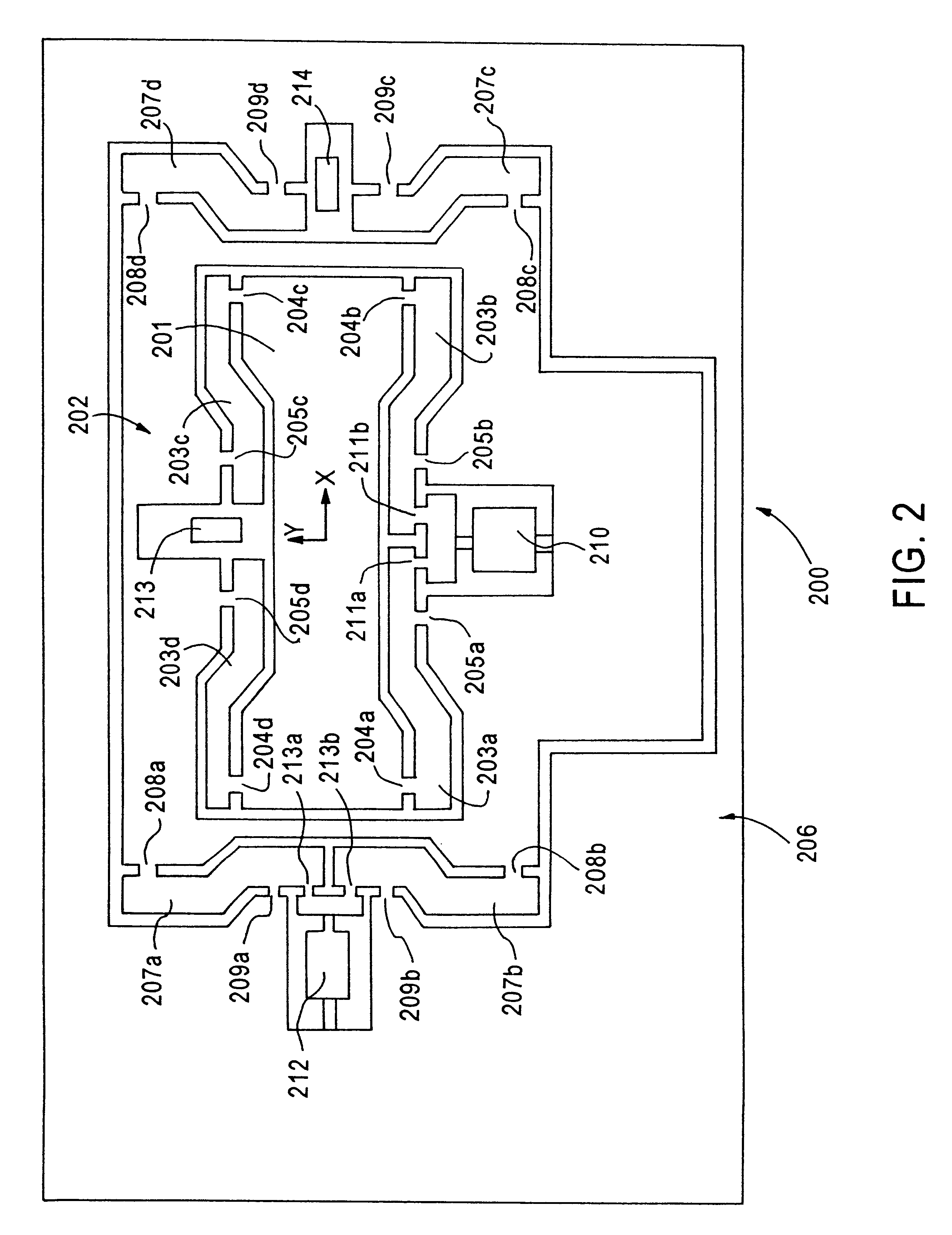Positioning stage
- Summary
- Abstract
- Description
- Claims
- Application Information
AI Technical Summary
Benefits of technology
Problems solved by technology
Method used
Image
Examples
freedom embodiment
Four-Degrees of Freedom Embodiment
A fourth degree of freedom may be added to a three-degree of freedom deformable structure micro-positioner by including an actuator placed on the moving stage. This actuator raises and lowers an object placed upon the deformable structure micro-positioner. FIG. 17 shows a three-degree of freedom positioner with actuator 1701 placed upon the moving stage 1702 to obtain the fourth degree of freedom. Upper stage 1703 is placed on top of actuator 1701. Unlabeled components are identical to those depicted in FIG. 16 and described above.
embodiment
Reduced Size Embodiment
The size of the above deformable structure parallel cantilever biaxial micro-positioning stages may be reduced as much as 60 percent. FIG. 6 depicts a reduced size embodiment 600. Shown is a one-degree of freedom device for movement in the direction of the Y-axis of the moving stage 607. As should be understood, the design may be expanded to achieve movement along the X-axis and to impart desired rotation to the moving stage. Also, two actuators may be used on any axis of movement. Unlabeled components are identical to those in FIG. 1.
The reduced size design maintains the symmetry of the previously described embodiments. Instead of four levers connecting the moving stage to the support structure 601, nested levers are used. Each of the four levers of the one-degree of freedom micro-positioner described above is replaced with two levers. Actuator 602 moves both levers 603a and 603b. Lever 603a pivots about flexure 604a. Lever 603b pivots about flexure 604b. In ...
PUM
| Property | Measurement | Unit |
|---|---|---|
| Force | aaaaa | aaaaa |
Abstract
Description
Claims
Application Information
 Login to View More
Login to View More - R&D
- Intellectual Property
- Life Sciences
- Materials
- Tech Scout
- Unparalleled Data Quality
- Higher Quality Content
- 60% Fewer Hallucinations
Browse by: Latest US Patents, China's latest patents, Technical Efficacy Thesaurus, Application Domain, Technology Topic, Popular Technical Reports.
© 2025 PatSnap. All rights reserved.Legal|Privacy policy|Modern Slavery Act Transparency Statement|Sitemap|About US| Contact US: help@patsnap.com



